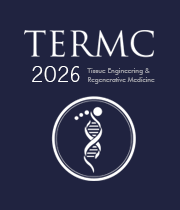Title : A versatile principle for creating pre-vascularized tissue in vitro for soft and hard tissue engineering
Abstract:
Pre-vascularization of in vitro engineered tissues significantly enhances their survival and proper function after in vivo implantation and is also a prerequisite for the relevance of in vitro tissue models. We propose a relatively simple and uniform principle for the construction of pre-vascularized tissues that can be further developed into skin tissue, blood vessel wall, or even the osteochondral interface.
The support structure for this construct is an electrospun nanofibrous membrane, usually made of a synthetic degradable polymer such as PLA, PLGA, or PCL. This membrane is seeded with mesenchymal stem cells (MSCs), usually derived from subcutaneous adipose tissue (ASCs), which are relatively easy to obtain by liposuction. After reaching subconfluence, the ASCs are overlaid with a collagen-based hydrogel loaded with endothelial cells (ECs). ASCs gradually migrate into the hydrogel and support the ECs in the formation of pre-capillaries where they act as pericytes. Human dermal fibroblasts (NHDFs) can be used instead of ASCs, but the precapillary network is less developed. When the surface of the construct is seeded with human keratinocytes, the pre-capillaries stop growing below the surface of the construct. However, if the pre-capillaries are allowed to reach the surface of the construct, they form openings on the surface and the endothelium forms a confluent layer on top.
In this way, either a vascularized dermo-epidermal skin construct can be obtained (ASCs are cells phenotypically close to fibroblasts), or a spontaneously endothelializing tunica intima and media complex, as ASCs are relatively easy to differentiate into smooth muscle cells. Bone marrow MSCs can also be seeded onto the nanofibrous membrane to support ECs in forming pre-capillaries comparable to ASCs. By adding chondrocytes to the collagen hydrogel, we have the opportunity to create an osteochondral interface where bmMSCs and chondrocytes support each other in inducing an osteogenic phenotype and maintaining a chondrogenic phenotype, respectively.
Interesting results were obtained when a construct containing ASCs and endothelial cells was implanted on the chorioallantoic membrane (CAM) of the chick embryo in the ex ovo system. This construct attracted vessels from the CAM, resulting in a greater area, length and number of branching vessels than after implantation of a cell-free control construct. In some cases, we also observed a connection between the original in vitro engineered vasculature and the CAM vasculature, i.e., inosculation.
Thus, the construct is promising in terms of regenerative medicine for soft and hard tissues, as well as for the creation of in vitro models of these tissues for various (patho)physiological and pharmacological studies that should limit the use of experimental animals in modern science according to the 3Rs principle. Our next perspective is the use of better-defined synthetic polymer matrices, e.g. hydrogels functionalized with cell adhesion-mediating oligopeptides.
Supported by the National Institute for Research of Metabolic and Cardiovascular Diseases project (EXCELES Programme, Project No. LX22NPO5104) - funded by the EU - Next Generation EU, the Czech Acad. Sci. (Praemium Academiae grant No. AP2202), P JAC Project No. CZ.02.01.01/00/22_008/0004562 of the MEYS, CR, co-funded by the European Union, and the Czech Health Research Council, Ministry of Health of the Czech Republic (grant No. NU22-06-00016).



